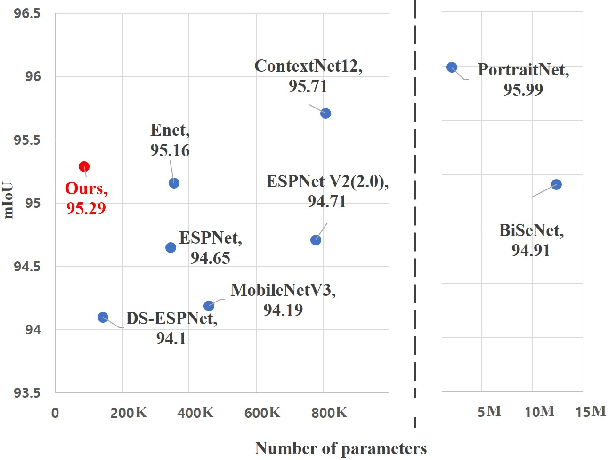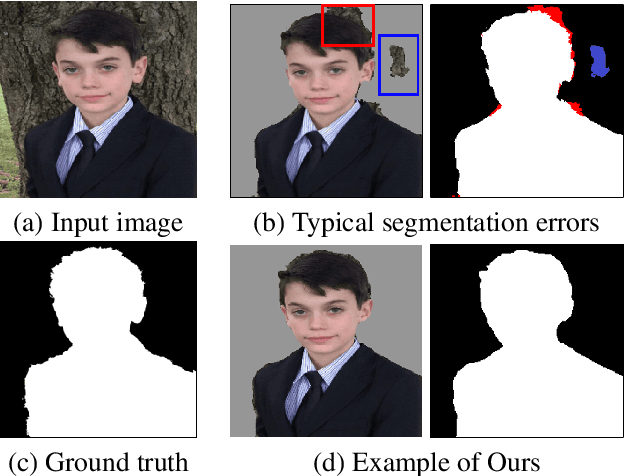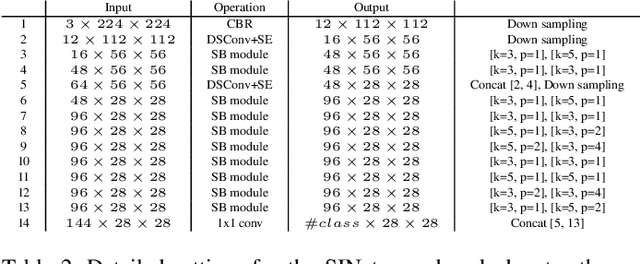Nicolas Monet
Lightweight 3D Human Pose Estimation Network Training Using Teacher-Student Learning
Jan 15, 2020



Abstract:We present MoVNect, a lightweight deep neural network to capture 3D human pose using a single RGB camera. To improve the overall performance of the model, we apply the teacher-student learning method based knowledge distillation to 3D human pose estimation. Real-time post-processing makes the CNN output yield temporally stable 3D skeletal information, which can be used in applications directly. We implement a 3D avatar application running on mobile in real-time to demonstrate that our network achieves both high accuracy and fast inference time. Extensive evaluations show the advantages of our lightweight model with the proposed training method over previous 3D pose estimation methods on the Human3.6M dataset and mobile devices.
SINet: Extreme Lightweight Portrait Segmentation Networks with Spatial Squeeze Modules and Information Blocking Decoder
Dec 09, 2019



Abstract:Designing a lightweight and robust portrait segmentation algorithm is an important task for a wide range of face applications. However, the problem has been considered as a subset of the object segmentation problem and less handled in the semantic segmentation field. Obviously, portrait segmentation has its unique requirements. First, because the portrait segmentation is performed in the middle of a whole process of many real-world applications, it requires extremely lightweight models. Second, there has not been any public datasets in this domain that contain a sufficient number of images with unbiased statistics. To solve the first problem, we introduce the new extremely lightweight portrait segmentation model SINet, containing an information blocking decoder and spatial squeeze modules. The information blocking decoder uses confidence estimates to recover local spatial information without spoiling global consistency. The spatial squeeze module uses multiple receptive fields to cope with various sizes of consistency in the image. To tackle the second problem, we propose a simple method to create additional portrait segmentation data which can improve accuracy on the EG1800 dataset. In our qualitative and quantitative analysis on the EG1800 dataset, we show that our method outperforms various existing lightweight segmentation models. Our method reduces the number of parameters from 2.1M to 86.9K (around 95.9% reduction), while maintaining the accuracy under an 1% margin from the state-of-the-art portrait segmentation method. We also show our model is successfully executed on a real mobile device with 100.6 FPS. In addition, we demonstrate that our method can be used for general semantic segmentation on the Cityscapes dataset. The code and dataset are available in https://github.com/HYOJINPARK/ExtPortraitSeg .
 Add to Chrome
Add to Chrome Add to Firefox
Add to Firefox Add to Edge
Add to Edge